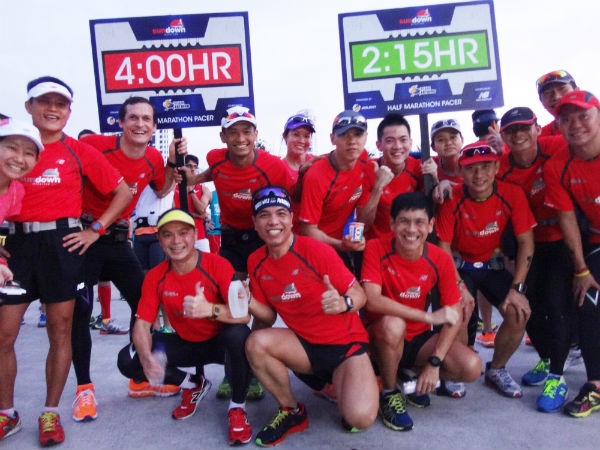If you are aiming to complete a marathon in a targeted timing, an important running tip is important to pace yourself wisely. And in order to help runners to reach the finishing line in their target time, many marathon races all over the world have pacers. These are groups of runners who set out to help runners complete the marathon in specific times, and for a Full Marathon, these could range from 3:30 hours to 5:30 hours.
While some bigger races, such as the Standard Chartered Marathon Singapore, may be transparent in giving the race strategy that their pacers are following, for example, to employ a constant pace to achieve their targeted timings, some of the smaller marathon races around the world may not be so transparent.
Pacers may start out too fast
Pacer groups for marathons, may tend to start out too fast – because unlike the runners, who may be running at their full capacity, pacers are running at a pace that is typically 15 minutes slower than their personal best race timings, so they will almost always be running at an easy pace. As a result, the pacers may unintentionally run a bit faster – without even realising it.
And pacers may slow down later on during the race in order to end up completing the marathon right on target. But what the pacers do not realise, is that while the pace is an easy one for them, it may be pushing many of the runners who are following them, to the limit. And by running too fast at the beginning, some runners may burn out midway through the race and so would be unable to keep up throughout the whole journey. As a result, these runners may fail to achieve a personal best timing for themselves.
Pacers speed up during uphills or to hydrate themselves
That aside, some pacers may also tend to suddenly speed up during a race when they need fluids from the hydration stations, or when they are running up slopes during the race – to avoid losing time. However, this, may be hard for some runners, especially new ones, to keep up with the pacers.
In fact, it may take them aback and sap their confidence as they try their hardest to keep up, using up more energy in the process. As a result, such runners may fail to achieve their desired timing during the marathon.
Sometimes it is better to use your own judgement
So during a marathon, if you cannot get used to a race strategy that the pacers are using, you’ll have to make your own judgement, as to whether to keep up with them or not. Sometimes it may be better to simply pace yourself, rather than relying 100 per cent on the pacers to get you through the race in your desired timing. Otherwise you may end up with disappointment.
That said though, it is usually safe to follow the pacers in most races in Singapore, as it is common practice here to run at an even pace. So if you want to practise, work out the constant pace that you need to run at, in order to achieve your target timing and run at this pace frequently during training sessions – and you will be all set and ready to follow the pacers and achieve your target goal, come race day.


Sometimes I use pacers as a guide if I’m doing my pace correctly. And I usually run faster than my target pacers. So when I see them getting close behind me, or if they’ve already overtook me, then I know I’m failing with my pacing strategy.